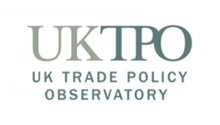China’s semiconductor industry faces a tension between self-sufficiency and global integration, engaging in open innovation where possible, but pivoting to security-driven self-reliance when necessary. Progress has been made, but big challenges remain, particularly with growing geopolitical risks.
China’s semiconductor industry is a linchpin of modern technological and industrial advances, sitting at the intersection of economic growth, national security and international engagement.
Recognising the importance of the industry, China has made significant investments and shown progress towards achieving self-sufficiency, particularly in equipment and mature nodes (not the most cutting edge semiconductors, but those based on older technology that is still used). But obstacles such as export controls and talent gaps persist.
To date, global integration has offered the country access to leading international expertise, but geopolitical tensions complicate further collaboration. Indeed, the most recent Sino-US technological confrontation – in which, alongside tariffs, the Trump administration is seeking to limit Chinese access to state-of-the-art semiconductors – further reveals that the industry in China is at a critical crossroads.
Its future is likely to hinge on a hybrid strategy that balances security-driven self-reliance with market-driven global integration. The implications of this approach will be influenced by fragmented international supply chains (where aspects of production and distribution are run by different entities), dynamic political stability (a political system that remains adaptive and effective in a changing environment) and evolving economic viability (dynamic processes that can ensure long-term economic success).
Why are semiconductors so important?
Semiconductors – often simply called chips – are the tiny electronic circuits that power virtually all modern digital technologies. They serve as the ‘brains’ of electronic devices – from smartphones and computers to cars and industrial machinery.
Moore’s law, the observation that there is a doubling of the number of transistors on a chip approximately every two years (see Figure 1), has enabled faster processing speeds and lower technology costs. In turn, this has driven waves of innovation and productivity growth (Hai and Klingler-Vidra, 2024).
Figure 1: Moore’s law: growth of transistor counts, 1970-2020
Source: Wikipedia, transistor count
Chips are essential for artificial intelligence (AI), cloud computing, the internet of things (IoT), electric vehicles (EVs), high-performance computing (HPC) and data services, as well as being critical for defence systems and surveillance infrastructure. Indeed, the chip industry’s dual role in civilian and military applications underscores its importance (Hai, 2024).
How has China’s semiconductor industry developed?
China’s semiconductor journey began during the cold war, with early efforts in the 1950s and 1960s supported by the Soviet Union. By the late Mao era, rudimentary transistors and integrated circuits (ICs) were being produced, but progress was limited until economic reforms in the late 1970s opened the door to foreign technology transfer and global collaboration.
The 1990s brought systematic industrial policies, such as the 908 project, which injected state funds into domestic fabs (specialised factories or fabrication plants) and recruited overseas talent, particularly from the Taiwan Semiconductor Manufacturing Company (TSMC). Shanghai emerged as an early hub as a result. But by 2000, China was only able to supply a tiny fraction of its domestic demand for semiconductors (Klingler-Vidra and Kuo, 2022).
The 2000s and 2010s marked incremental progress with companies like HiSilicon (Huawei’s chip design arm) and Semiconductor Manufacturing International Corporation (SMIC, founded in 2000) gaining prominence. Government support intensified through tax breaks, research and development (R&D) programmes and the National IC Industry Investment Fund (‘Big Fund’), which was established in 2014 with significant financing.
The Made in China 2025 Initiative – chaired by China’s state council and launched in 2015 – set ambitious targets for 70% self-sufficiency by 2025, although recent assessments suggest that this goal is unlikely to be met fully (Hai, 2024). By the mid-2010s, the gap between consumption and production had widened, highlighting persistent challenges in reaching technological parity.
The late 2010s saw a turning point with the China-US trade war escalating into a ‘tech war’ over semiconductors. US export controls, starting with telecoms companies ZTE (in 2018) and Huawei (in 2019), not only disrupted corporate operations, but also exposed China’s vulnerabilities and dependence on foreign semiconductor technologies, particularly in the most advanced stages of chip design and fabrication.
For policy-makers in Beijing, this was both a commercial wake-up call and a national reckoning – one that raised pressing concerns over economic security, innovation sovereignty and long-term developmental resilience.
The result was a ‘Sputnik moment’ in China and a redoubling of efforts towards achieving self-reliance (US-China Economic and Security Review Commission, UCESRC, 2022). (A Sputnik moment refers to one country’s technological progress shocking another country into major investment, for example, in education or R&D – in the original case, the impact on the United States of the launch of Sputnik 1, a Soviet satellite.)
This was more than a policy adjustment, but rather a profound recalibration of China’s development trajectory in an era when technological autonomy is increasingly intertwined with geopolitical survival and global leadership aspirations. China’s President Xi called for breakthroughs in ‘core technologies’ at the 20th Party Congress in 2022 and underscored the urgency with the term ‘technology’ mentioned 55 times, up from 34 in 2017 (International Department, Central Committee of the Communist Party of China, IDCPC, 2023).
More recently, the third National IC Industry Investment Fund provided over 344 billion renminbi ($47.1 billion) – an amount greater than the first and second rounds combined – at the same time as the tightening tech-integrated tariff-embedded confrontation between China and the United States was heating up.
In combination, these developments highlight China’s aim to boost semiconductor self-sufficiency, which is expected to reach 50% by 2025 (TrendForce, 2025). Diverse companies – such as Cambricon Technologies, ChangXin Memory Technologies (CXMT), China Electronics Corporation (CEC), HiSilicon, Hua Hong Semiconductor Limited (HuaHong), Shanghai Enflame Technology Co, Shanghai Micro Electronics Equipment (SMEE), SMIC and Yangtze Memory Technology Corp (YMTC) – have made significant progress in technology R&D and market expansion.
What’s more, they have achieved high self-sufficiency in areas like photoresist stripping, cleaning, etching and chemical mechanical planarisation (CMP) – all crucial processes in semiconductor production. But challenges remain in other parts of the process, including metrology, coating/developing, lithography and ion implantation, where external technology, particularly from Japan, the Netherlands and Taiwan, is still critical.
What is the make-up of China’s semiconductor industry?
China’s semiconductor ecosystem is diverse, comprising state-owned enterprises (such as CEC, HuaHong, SMIC and YMTC), private firms (such as CXMT, HiSilicon and Tsinghua Unigroup) and multinationals (such as Intel, Samsung, SK Hynix and TSMC). It also features a vibrant scene of start-ups and small and medium-sized enterprises focused on niche applications.
Geographically, the industry is clustered in regions like the Yangtze River Delta (centred on Shanghai, plus Nanjing, Suzhou, etc.), which focuses on the foundry; the Beijing-Tianjin region, which has strengths in design; and the Pearl River Delta (Shenzhen, Guangzhou), which is known for fabless design – that is, designing chips while outsourcing the manufacturing (fabrication) to specialised foundries. Central and western China, as well as southwestern China, also have vibrant local semiconductor clusters in R&D and different industrial applications.
This regional spread reflects local governments’ enthusiasm for investing in chips to create high-tech hubs. But the approach has also led to some redundant projects (Hai, 2024).
In 2022, China accounted for 16% of global chip production, ranking third, with a market share of 7% (up from 5% in 2020). The industry in China generated $179.5 billion in revenue in 2023, with an expected compound annual growth rate of 7.31% from 2023 to 2027.
Despite these gains, China remains reliant on imports. For example, in the third quarter of 2023, imports of chip-making equipment surged by 93% to $8.75 billion, and imports of lithography equipment increased nearly four-fold. This highlights China’s continued dependence on foreign suppliers, including the Netherlands (with a 30% share, up from 15%) and Japan (25%, down from 32%).
The strategic importance of chips for civil and security sectors
China’s progress in semiconductors is not an end in itself, but a means to enable advances in a spectrum of civilian industries. As the digital and physical economies become ever more intertwined, virtually every high-growth sector depends on reliable and sophisticated chips.
In AI, domestic chips are crucial for training models in generative AI, smart cities and fintech, with companies like Alibaba, Cambricon and DeepSeek developing neural processing units to reduce reliance on foreign graphics processing units (GPUs). Cloud computing relies on high-end processors, with domestic alternatives like Huawei’s Kunpeng series emerging.
The IoT benefits from China’s strength in low-end chips for smart devices, while EVs require thousands of chips for control systems, prompting local firms like BYD to develop automotive chips. HPC, data centres and data services further underscore the need for a secure domestic supply of semiconductors to ensure resilience against external disruptions.
Beyond its civil applications, China’s chip development is critically important to national security and the evolving civil-security complex – the nexus of civilian technology industries and the state’s security apparatus.
Semiconductors are dual use by nature: the same advanced chip that powers a commercial AI system can also drive a military intelligence platform or an encrypted communications network.
Further, China’s military-civil fusion strategy aims to make use of civilian advances for defence, reducing reliance on foreign technology that could be restricted during conflicts (Dupont-Sinhsattanak, 2025).
For China, mastering semiconductor technology is not just an economic imperative, but also a matter of national security. Control of chip technology has therefore become a central concern for Chinese strategists who view it through the lens of security, regime stability and great power competition (Hai and Klingler-Vidra, 2024).
How might China balance self-sufficiency with global integration?
Despite being the ‘world’s factory’ in other industries, China remains heavily dependent on foreign chips and related technologies, particularly from Japan, the Netherlands, South Korea, Taiwan and the United States.
This dependency has been framed as a strategic vulnerability, with the Chinese central state warning that reliance on foreign core technologies could leave China ‘stuck in the neck’ or strangled (Ding, 2024).
The tech war between China and the United States in recent years has only intensified this debate (Chan, 2025). This is because China views dependence on foreign core technologies – especially those from American technology ecosystems – as a critical strategic weakness that exposes them to externally imposed bottlenecks in areas such as advanced semiconductors and AI-integrated hardware.
This confrontation has reinforced Beijing’s resolve to localise innovation capacity. The ability of foreign actors to cut off vital technology nodes has also shifted China’s industrial policy from one of catch-up to security-driven self-reliance in many critical technologies, especially semiconductors.
Indeed, China’s policy on chips is pulled by two logics that are sometimes complementary, but sometimes conflicting: one of pursuing self-sufficiency; and the other of embracing open innovation that emphasises the benefits of global integration and knowledge exchange (Thun et al, 2025). Understanding this balance is key to analysing China’s strategic choices.
The push for self-sufficiency is driven by strategic imperatives of technological autonomy and national security. It is rooted in legitimate goals: securing supply chains, protecting national security and asserting technological sovereignty. Further, China’s extensive state support and indigenous innovation drive have begun to yield results, from 7nm prototype chips manufactured under sanctions to growing capabilities in memory and AI chip design.
There is a newfound confidence, evidenced by headlines of Chinese chip breakthroughs, that China can gradually lessen its reliance on Western technology. But this path comes with the risk of insularity and reinventing the wheel, potentially slowing innovation and isolating China’s industry from global advances (Triolo, 2024). It also contributes to a fracturing of the once unified global market.
Equally, full self-sufficiency is challenging due to the industry’s complexity and global interdependence, as well as talent shortages and external resistance (Centre for Emerging Technology and Security, CETaS Briefing Papers, 2024).
Conversely, global integration emphasises international collaboration embedded in open innovation as a driver of progress. Historically, China’s technological rise benefited from foreign partnerships and technology transfers. Indeed, in many ways, the semiconductor sector – perhaps more than any other – epitomises globalisation of knowledge and production.
But US-led export controls have constrained access to advanced tools like the Dutch firm ASML’s extreme ultraviolet (EUV) lithography machines (Centre for Strategic and International Studies, CSIS, 2024).
Despite this, China engages with countries in Europe, as well as Japan and South Korea for less restricted technologies and materials. It also uses open source initiatives (like RISC-V) to reduce dependence on proprietary Western technologies.
Remaining connected to international flows of technology, talent and commerce could greatly enhance China’s ability to innovate and compete at the frontier. A cooperative approach might also alleviate global fears and reduce the impetus for decoupling.
Yet, the geopolitical reality – particularly the escalation of the China-US trade war – makes open innovation increasingly hard to practice (VerWey, 2019). Trust between China and other leading technology nations has eroded, and restrictions aimed at China have, to a degree, forced its hand towards self-reliance.
The interplay between self-sufficiency and global integration in China’s chip industry could be described as a dynamic contest – a push and pull where each logic asserts itself in turn, yet ultimately both co-exist in a nuanced balance. The tension between these approaches reflects a broader debate in China on whether to prioritise security or efficiency.
But rather than one completely displacing the other, China’s approach to semiconductors has involved pragmatic blending: sometimes leaning nationalist and inwards; at other times internationalist and outwards; and often trying to do both simultaneously in different forms (Klingler-Vidra and Pacheco Pardo, 2025).
In practice, a hybrid strategy – as China has attempted to pursue – is engaging in open innovation when possible but pivoting to self-reliance whenever external access is cut off or deemed too risky.
It is a legacy rooted in the era of reform and opening up, and Chinese policy-makers often talk of ‘walking on two legs’: one being indigenous development; the other international cooperation. This dual approach has been evident in the evolution of China’s technology policy beyond the chip industry (Hai, 2024).
What are the geopolitical considerations?
China’s relations with key semiconductor powers shape the global industry’s integration. The China-US rivalry has led to partial decoupling, with export controls restricting China’s access to advanced chips, while American firms like Qualcomm and Applied Materials earn significant revenue in China.
Taiwan, via TSMC, remains a critical node, producing 90% of the world’s most advanced chips. But geopolitical risks could disrupt supply chains, potentially destabilising the global economy.
While Japan and South Korea tend to be aligned with US policies, both maintain significant business ties with China due to strong economic interdependence, with South Korean firms like Samsung and SK Hynix operating fabs in China.
Europe adopts a middle ground (or is trapped there), restricting high-end tools while maintaining trade in mature technologies. Indeed, ASML’s chief executive has warned that decoupling could backfire.
The global implications of the semiconductor industry are profound and growing. Established and emerging semiconductor powers are adjusting strategies in response to the uncertain landscape: the United States is investing inwards and with allies; South Korea and Taiwan are diversifying manufacturing locations; and Europe and Japan are hedging with their own initiatives.
Many countries in the global south are watching closely, as the outcome will shape their access to advanced technology and their role in the reshaping of supply chains.
As history indicates, technology decoupling is not a one-sided proposition. As China races to reduce dependence on the United States, the latter and others are also grappling with reducing their dependence on China (for manufacturing scale, rare earth materials and so on).
China strengthens ties with emerging markets through initiatives like the Belt and Road Initiative, positioning itself as a partner for semiconductor development in regions like Africa and Southeast Asia. Countries like India and Vietnam, courted by the United States as alternatives, could either compete with or complement China’s efforts, depending on geopolitical shifts.
The potential for a bifurcated global market looms large. But for China and the rest of the world, the interdependence built since the late 1970s, more than 40 years of globalisation, cannot be swiftly undone without significant pain.
What is the likely future trajectory for the industry?
Looking ahead, China’s chip industry is likely to evolve through a hybrid model, balancing partial self-sufficiency in mature nodes and strategic sectors, with global integration and selective openness for non-critical technologies.
Recent projections suggest that China’s share of global fab capacity could reach 21% by 2030. This could potentially lead to an oversupply of mature-node chips, which would affect competitors like the UK and even South Korea.
The future of China’s chip industry will be determined by how the country navigates the complex interplay of political imperatives, economic objectives and technological realities (Jiang, 2023).
Several key dimensions are likely to shape the future: the industrial purpose (political security versus economic progress); the market orientation (planning versus market mechanisms); and the evolving roles of national and local actors in development models.
Although predicting the future is fraught with uncertainty – especially in a fast-moving sector like semiconductors – the industry’s success will depend on navigating institutional and geopolitical tensions, addressing talent gaps, and making use of global partnerships and open R&D where possible (Hai and Klingler-Vidra, 2022; Li, 2022; Sun et al, 2014).
Conclusion
China’s chip industry stands at a historical inflexion point, caught between the desire for self-sufficiency and the benefits of global integration. Over past decades, China has transformed from a negligible player to a major force in semiconductors, yet it still depends on global technology at the cutting edge.
The contention between a techno-security state model, which concentrates on national security and political stability, and a techno-developmental state model, which is focused on innovation-driven economic growth and industrialisation, will continue to shape China’s strategies. The country’s success in balancing these will determine not only its own technological future, but also the configuration of the global semiconductor landscape.
For the chip industry and cutting-edge technological innovation sector around the globe, decoupling from the United States spells deglobalisation. But the same applies to decoupling from China. Each country forms an indispensable pillar of the semiconductor ecosystem. A decoupling of the two would essentially split the world’s technology landscape in two, an outcome that could roll back some of the gains of the last half-century.
Avoiding that outcome, while addressing the genuine points of contestation, is the collective challenge ahead, and the Chinese case exemplifies this dilemma. For global stakeholders, finding a modus vivendi with a techno-ascendant China may be wiser than attempting to achieve comprehensive exclusion. For China, acknowledging that complete self-reliance is a long-term, perhaps elusive, goal might counsel in favour of keeping bridges to global technology open wherever possible.
The trajectory of China’s chip industry will test the proposition of whether a globally intertwined sector can withstand the pressures of great power competition. The hope is that even amid rivalry, cooler heads in industry and policy circles worldwide will recognise the mutual stake in a connected, if prudently managed, global semiconductor network.
In that recognition may lie the seeds of a new equilibrium, one in which China’s chip industry can flourish in both contest and cooperation, to the benefit of China and the world.
Where can I find out more?
- The chipmakers caught in the trade war crossfire: New York Times article.
- How the US-China chip conflict is evolving under Trump: Japan Times article.
- China’s chip industry is gaining momentum – it could alter the global economic and security landscape: article by Jiawei Steven Hai and Robyn Klingler-Vidra in The Conversation.
- Washington shores-up friends in the semiconductor industry: East Asia Forum article.
- Chinese semiconductors and alternative paths to innovation: article in High Capacity.
- China’s response to the US tech war: policy brief from the Danish Institute for International Studies by Yang Jiang.
- Massive modular ecosystems – a framework for understanding complex industries in the digital age: World Bank Group policy research working paper.









































